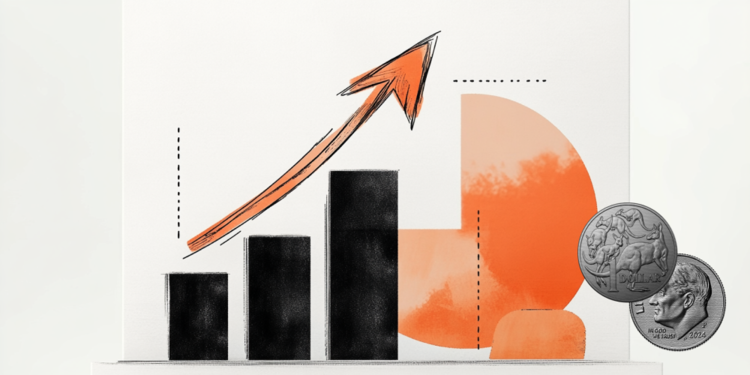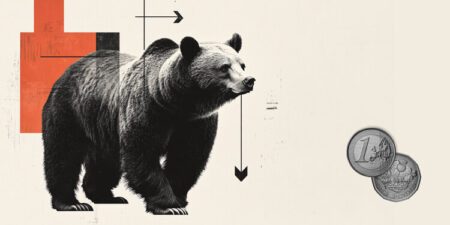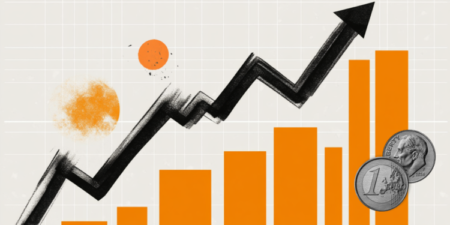- AUD/USD surges to near 0.6260 as the US Dollar plummets in a thin-trading volume day ahead of Trump’s inauguration.
- Donald Trump is expected to clear key policies such as immigration controls, tax cuts, and higher import tariffs soon after returning to the White House.
- The Australian Dollar gains despite the PBoC leaving its LPR unchanged.
The AUD/USD pair soars to near 0.6260 in Monday’s North American session. The Aussie pair rallies as the US Dollar (USD) plunges on a thin-trading volume day, with United States (US) markets remaining closed on account of Martin Luther King’s Birthday.
The US Dollar Index (DXY), which tracks the Greenback’s value against six major currencies, dives to near 108.30 as reports from the Wall Street Journal (WSJ) shows President-elect Donald Trump is planning to issue a broad memorandum that directs federal agencies to study trade policies and evaluate US trade relationships with China and America’s continental neighbors—but stops short of imposing new tariffs on the first day of his office.
The Greenback faces pressure as its safe-haven demand diminishes, given that market participants were anticipating that Trump would impose higher tariffs soon after returning to the White House.
Earlier, a report from Fox News Digital showed that Trump would sign over 200 orders in his first day of office that might include policies such as immigration controls, lower tax cuts, and higher tariffs. Market experts believe that Trump’s economic policies would be pro-growth and inflationary for the US.
Still, the event will force the Federal Reserve (Fed) to keep interest rates at their current levels for longer.
Currently, traders are pricing in more than one interest rate cut from the Fed this year, seeing the first in June, according to the CME FedWatch tool.
Meanwhile, the Australian Dollar (AUD) exhibits a mixed performance after the People’s Bank of China (PBoC) monetary policy decision. The PBoC kept its one-year Loan Prime Rate (LPR) unchanged at 3.10%, while the five-year LPR remains at 3.60%.
Since China and Australia are close trading partners, any shifts in China’s economy could have an impact on Australian markets.
Australian Dollar FAQs
One of the most significant factors for the Australian Dollar (AUD) is the level of interest rates set by the Reserve Bank of Australia (RBA). Because Australia is a resource-rich country another key driver is the price of its biggest export, Iron Ore. The health of the Chinese economy, its largest trading partner, is a factor, as well as inflation in Australia, its growth rate and Trade Balance. Market sentiment – whether investors are taking on more risky assets (risk-on) or seeking safe-havens (risk-off) – is also a factor, with risk-on positive for AUD.
The Reserve Bank of Australia (RBA) influences the Australian Dollar (AUD) by setting the level of interest rates that Australian banks can lend to each other. This influences the level of interest rates in the economy as a whole. The main goal of the RBA is to maintain a stable inflation rate of 2-3% by adjusting interest rates up or down. Relatively high interest rates compared to other major central banks support the AUD, and the opposite for relatively low. The RBA can also use quantitative easing and tightening to influence credit conditions, with the former AUD-negative and the latter AUD-positive.
China is Australia’s largest trading partner so the health of the Chinese economy is a major influence on the value of the Australian Dollar (AUD). When the Chinese economy is doing well it purchases more raw materials, goods and services from Australia, lifting demand for the AUD, and pushing up its value. The opposite is the case when the Chinese economy is not growing as fast as expected. Positive or negative surprises in Chinese growth data, therefore, often have a direct impact on the Australian Dollar and its pairs.
Iron Ore is Australia’s largest export, accounting for $118 billion a year according to data from 2021, with China as its primary destination. The price of Iron Ore, therefore, can be a driver of the Australian Dollar. Generally, if the price of Iron Ore rises, AUD also goes up, as aggregate demand for the currency increases. The opposite is the case if the price of Iron Ore falls. Higher Iron Ore prices also tend to result in a greater likelihood of a positive Trade Balance for Australia, which is also positive of the AUD.
The Trade Balance, which is the difference between what a country earns from its exports versus what it pays for its imports, is another factor that can influence the value of the Australian Dollar. If Australia produces highly sought after exports, then its currency will gain in value purely from the surplus demand created from foreign buyers seeking to purchase its exports versus what it spends to purchase imports. Therefore, a positive net Trade Balance strengthens the AUD, with the opposite effect if the Trade Balance is negative.
Read the full article here















